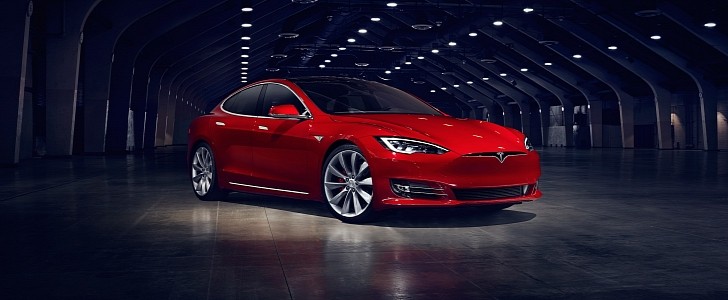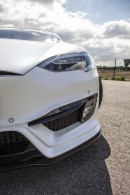Another one of Tesla’s older problems is rearing its ugly head again: the fact that the EV maker has played too-loose with the term “Autopilot” in marketing it.
While the official Tesla website makes it very clear that not a single one of its cars is autonomous, the way Autopilot is presented in marketing seems to tell a different story. In clearer terms, marketing for Autopilot sends the wrong message to customers that the cars can drive themselves, by using ambiguous language and refusing to specify the limitations of the driver-assist system.
Earlier this week, a German court ruled that Tesla was indeed misleading customers here in the way it marketed Autopilot, after an industry body filed an injunction against the carmaker. Now, car safety and research organization Thatcham Research from the UK is saying basically the same.
Matthew Avery of Thatcham Research is also a board member of Euro NCAP, and he believes Tesla could use some toning down in the language it uses to describe Autopilot and its merits to new clients. Thatcham has long “warned of the pitfalls of the Autopilot system,” Avery explains, because it is “not a self-driving system. It is there to provide driver assistance, not become an invisible chauffeur.”
It’s not that Autopilot doesn’t have its merits – because it does, and they make it the best system of the kind on the market, Avery continues. It’s the fact that Tesla is deliberately allowing misconceptions about Autopilot persist, once they appear due to misleading advertising language. In reality, this translates into drivers assuming that engaging Autopilot mode means a fully autonomous cars, which prompts them to engage in behavior not compatible with driving, like sleeping, playing games or using their phones.
“When marketed and in turn used sensibly, systems like this will ultimately benefit road safety,” Avery adds. “The outcomes of driver over-reliance on the Autopilot system can be catastrophic. Reports of accidents with Autopilot engaged have become all too familiar. Many are fatal and we don’t know if drivers were ‘taking a chance’ or worse still, literally believing their Autopilot system was fully capable of driving the car itself.”
What Avery is basically saying is put a “Warning! The beverage you’re about to enjoy is a hot one” sticker on Teslas, like Starbucks did on their coffee mugs. Or something to that effect.
Earlier this week, a German court ruled that Tesla was indeed misleading customers here in the way it marketed Autopilot, after an industry body filed an injunction against the carmaker. Now, car safety and research organization Thatcham Research from the UK is saying basically the same.
Matthew Avery of Thatcham Research is also a board member of Euro NCAP, and he believes Tesla could use some toning down in the language it uses to describe Autopilot and its merits to new clients. Thatcham has long “warned of the pitfalls of the Autopilot system,” Avery explains, because it is “not a self-driving system. It is there to provide driver assistance, not become an invisible chauffeur.”
It’s not that Autopilot doesn’t have its merits – because it does, and they make it the best system of the kind on the market, Avery continues. It’s the fact that Tesla is deliberately allowing misconceptions about Autopilot persist, once they appear due to misleading advertising language. In reality, this translates into drivers assuming that engaging Autopilot mode means a fully autonomous cars, which prompts them to engage in behavior not compatible with driving, like sleeping, playing games or using their phones.
“When marketed and in turn used sensibly, systems like this will ultimately benefit road safety,” Avery adds. “The outcomes of driver over-reliance on the Autopilot system can be catastrophic. Reports of accidents with Autopilot engaged have become all too familiar. Many are fatal and we don’t know if drivers were ‘taking a chance’ or worse still, literally believing their Autopilot system was fully capable of driving the car itself.”
What Avery is basically saying is put a “Warning! The beverage you’re about to enjoy is a hot one” sticker on Teslas, like Starbucks did on their coffee mugs. Or something to that effect.
Tesla Autopilot was literally named after the term used in aviation. Also, what about Autobahn!?
— Elon Musk (@elonmusk) July 14, 2020















